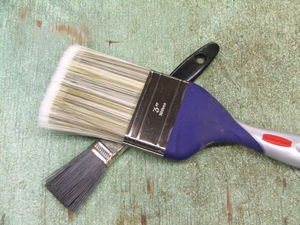The following are four childhood skin diseases that are rather common. As always check with your doctor when dealing with these conditions. According to the http://medlineplus.gov/ and http://www.lib.uiowa.edu/hardin/md/index.html, these diseases, while uncomfortable, are usually not life threatening.
Hand-foot-mouth disease: (not related to foot (hoof) and mouth in animals.
This childhood skin disease appears suddenly and is a self-limiting viral disease. Hand-foot-mouth disease is highly contagious and spreads from child to child to adult by direct contact with nasal or oral and stool matter.
The incubation period is usually 3-6 days. Symptoms can be fever, sore throat, and loss of appetite, sore mouth, headache, cough, fatigue, and rash.
The mouth, tongue, gums, or throat start out with red areas. These red areas turn into blisters that can form lesions.
The arms and legs usually display red flat spots that also turn into blisters and then into lesions. Lesions on the hands and feet commonly show up on the sides and backs of fingers and toes. They may also be present on the palms and soles.
To keep this childhood skin disease under control and in preventive mode, wash hands frequently. Avoid contact with pregnant women.
Most cases of childhood hand-foot-mouth disease are said to rarely have complications, but when there are, this childhood skin disease can include inflammation of the heart and brain and pneumonia may set in. It is suspected of causing miscarriage in pregnant women.
You may want to keep children in if they have the hand-foot-mouth disease. Acetaminophen or ibuprofen for fever/pain may be warranted. (No aspirin for 12 and under.) And you may want to encourage the child with hand-foot-and mouth disease to drink plenty of fluids.
Check with your doctor on hand-foot-mouth disease and all childhood skin diseases.
Scabies:
Scabies is an itchy skin caused by tiny parasites called mites. This childhood skin disease is an “uncomfortable” one and it is extremely contagious.
The mites that cause scabies in children are passed with person-to-person contact. The more crowded the area, such as pre-schools, the more opportunity for the scabies disease to make contact with the child.
The scabies rash appears on the child when mites burrow into the top layer of skin and lays eggs. Without treatment, this childhood skin disease usually will not improve.
The severe itching caused by Scabies can occur on the trunk, arms and legs, head and neck and palms and soles.
The intense itching can make the child scratch until a bacterial infection takes hold. In this case, antibiotics may be needed.
Check with your doctor on Scabies and all childhood skin diseases. If the itching lasts longer than 2-4 weeks, or the rash spreads AFTER treatment, the child needs to be seen by the doctor again. Re-treatment may be required.
The childhood skin disease “fifth disease”.
This childhood skin disease called fifth disease can have a long period of time between the child actually being exposed to this skin disease and the actual time the rash appears.
In the beginning of fifth disease, the child may just feel under the weather. They may run a low-grade fever, have headaches, muscle aches and experience fatigue. This may go on for a few days.
This childhood skin disease is the most contagious in the first couple of days while experiencing the above symptoms. For a week or so, the child may become symptom free, but then the telltale rash of fifth disease starts to appear. It is this week of no symptoms that usually throws everyone off on the diagnosis of this childhood skin disease.
In fifth disease, the first stage shows up as bright red cheeks, which lends the name “slapped cheek”. This part of the rash can intensify when the child goes from a cool to warm place.
The second phase of fifth disease rash comes 1-4 days later. It’s a less intensive rash that appears on the trunk, buttocks and limbs. This rash will begin to get blotchy and have a “lacy” pattern to it.
At this point, this skin disease rash pattern can last for a week or it can last for a month or more. The rash can also disappear and reappear with heat, such as the child taking a bath.
Some give something for the itch or achy joints. Oatmeal baths have been found to be soothing.
See your doctor about fifth disease and all childhood skin diseases.
The childhood skin disease Scalp Ringworm.
Scalp ringworm is a common mild infection of the scalp. It appears as scaly spots and patches. Unlike its name “ringworm”, this childhood skin disease is actually caused by a fungus.
Coming into direct contact with infected people, combs, pillows, caps, etc. are how Scalp ringworm is passed. In a less common avenue, the fungus can come from animals and the soil.
This childhood skin disease seems to affect boys more than girls. It is usually located on the scalp and more rarely on the eyebrows and eyelashes. There will be gray scales and possible hair loss in these locations.
The symptoms of scalp ringworm may be red and inflamed, small puss-filled bumps. You might also notice that your child’s lymph nodes are swollen. Beware of a large oozing lump filled with puss called Kerion. If this is present seek aggressive treatment to avoid scarring and permanent hair loss in that location.
See your doctor about Scalp ringworm and all childhood skin diseases.
Typically, when a child contracts a childhood skin disease, they will form immunity from it. Skin infections in children are often most contagious before the symptoms appear.
This is an overview of childhood skin diseases. Remember to contact your doctor.
sources:
http://medlineplus.gov/
http://www.lib.uiowa.edu/hardin/md/index.html
The book Alternative Cures by Gottlieb
Reference:
- University of Iowa Library www.lib.uiowa.edu/hardin/md/index.html





